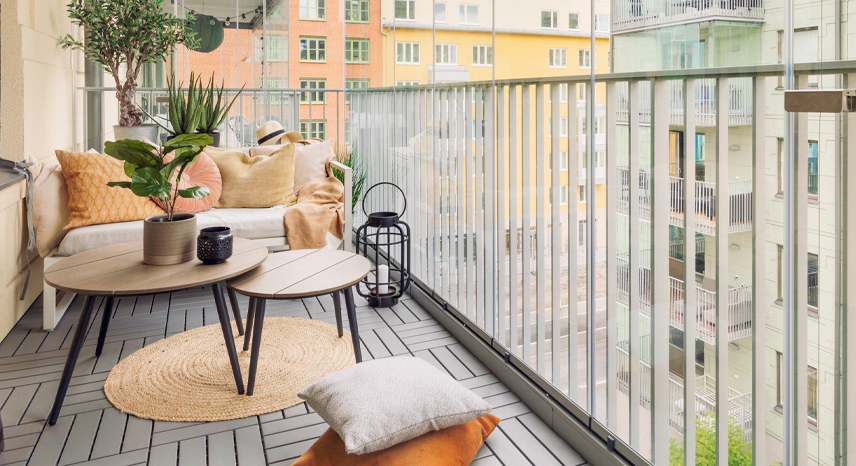How to Create a Cozy, Functional Home Office: Balancing Productivity and Comfort
Time 5 min(s) read
In today’s world, where remote work is becoming the norm, creating the perfect home office is essential.
In today’s world, where remote work is becoming the norm, creating the perfect home office is essential. You want a space that encourages focus and productivity, but also one that feels inviting and comfortable. Striking the right balance between functionality and coziness is key. Here’s how to design a home office that feels like your own personal productivity haven, without sacrificing comfort.
1. Choose the Right Location
The first step in creating your cozy home office is choosing the right location. Ideally, it should be somewhere relatively quiet with minimal distractions. If you have a separate room, that’s fantastic! But even if you don’t, you can carve out a dedicated space in a corner of your living room or bedroom. The key is to have a designated area that signals to your brain, “It’s work time.”
If possible, try to place your desk near a window for natural light. Exposure to daylight boosts your mood and helps regulate your circadian rhythm. A view of nature, even a small garden or a tree outside, can reduce stress and improve focus.
2. Pick the Right Furniture
Furniture is where comfort meets functionality. You’ll spend a lot of time in your office, so choose pieces that offer support while still feeling cozy. Here are a few key items to consider:
- Ergonomic Chair: A comfortable chair is a must. It should support your back and encourage good posture. Don’t skimp on this item; it’s an investment in both your health and comfort.
- Spacious Desk: Your desk should be large enough to accommodate your computer, notebooks, and any other essentials but not so large that it feels overwhelming. A tidy, organized desk helps reduce mental clutter.
- Storage Solutions: To keep your workspace clutter-free, add functional storage options such as shelves, drawers, or filing cabinets. This helps maintain a tidy environment that boosts productivity.
3. Go for a Calming Color Palette
The colors you choose for your office can greatly affect your mood and productivity. Soft, neutral tones like whites, grays, and beige promote a calm and focused atmosphere. You can add a pop of color with accessories, such as a colorful rug, throw pillows, or art, to make the space feel warmer and more inviting.
For a creative boost, try incorporating shades of blue or green. Studies show these colors promote concentration and creativity.
4. Maximize Lighting
Good lighting is essential for reducing eye strain and boosting energy levels. While natural light is ideal, you can also complement it with task lighting such as a desk lamp. Opt for warm light to create a cozy, relaxing vibe, or use adjustable lamps to tailor the lighting to your needs throughout the day.
Consider adding ambient lighting, like fairy lights or a soft overhead light, to create a welcoming atmosphere that doesn’t feel too harsh or sterile.
5. Add Personal Touches
Personalizing your workspace will make it feel more like your own sanctuary. Displaying a few meaningful items, such as framed photos, artwork, plants, or souvenirs from your travels, can infuse your office with character.
Having a plant in your office can improve air quality and add a touch of nature to your space. Some great low-maintenance plants for a home office include succulents, snake plants, or pothos. Plus, greenery helps reduce stress and improve focus.
6. Create an Organized Layout
An organized space will help clear your mind and enhance productivity. Begin by keeping your desk clear of unnecessary clutter, leaving only your most important tools at arm’s reach. Use drawer organizers or storage boxes to keep paperwork and office supplies in order.
To optimize space, position your desk in a way that allows you to move around comfortably. Keep cables under control with cable organizers, or even consider wireless options for a cleaner look.
7. Incorporate Comfortable Textiles
To add a cozy vibe to your office, incorporate soft textiles such as rugs, throw blankets, and cushions. A plush rug underfoot can make a world of difference, creating a warm and inviting atmosphere. Adding a comfortable blanket over your chair or couch (if your office doubles as a relaxation space) can also make the area feel like a retreat.
8. Use Smart Technology
Technology is essential for productivity, but it doesn’t have to be bulky or intrusive. Invest in a wireless keyboard and mouse, a good-quality webcam, and a noise-canceling headset to keep your workspace clean and functional.
Smart devices, such as voice-controlled assistants, can help you stay on top of tasks and manage] schedules hands-free. A smart thermostat is also a great addition to ensure your office remains at the perfect temperature year-round.
9. Take Breaks and Create a Relaxing Corner
Finally, don’t forget the importance of rest. Set up a small corner with a comfortable chair or a bean bag where you can take short breaks. This space can be equipped with a coffee station, a bookshelf, or even a mindfulness corner with scented candles and calming music. Taking breaks and stepping away from your desk will refresh your mind and help you return to work with renewed focus.
Creating a cozy, functional home office is all about striking the right balance between comfort and productivity. By investing in the right furniture, lighting, and decor, and keeping your workspace organized, you can create a space that feels both functional and inviting. Remember to personalize it with touches that make you feel at home while also prioritizing ergonomics and efficiency. With these tips, your home office will become a place you actually look forward to spending time in—and that boosts your productivity.



